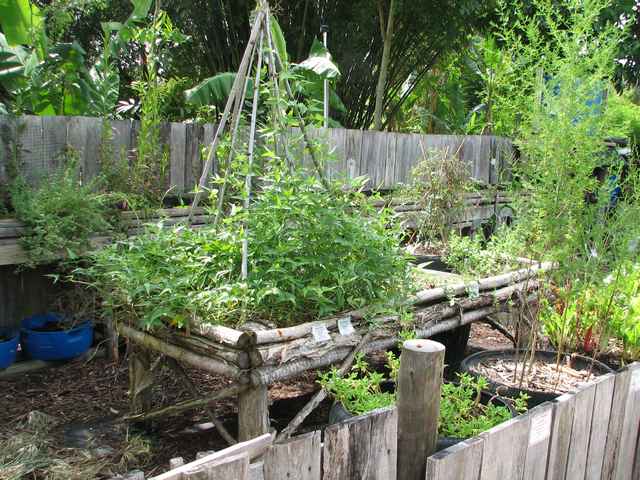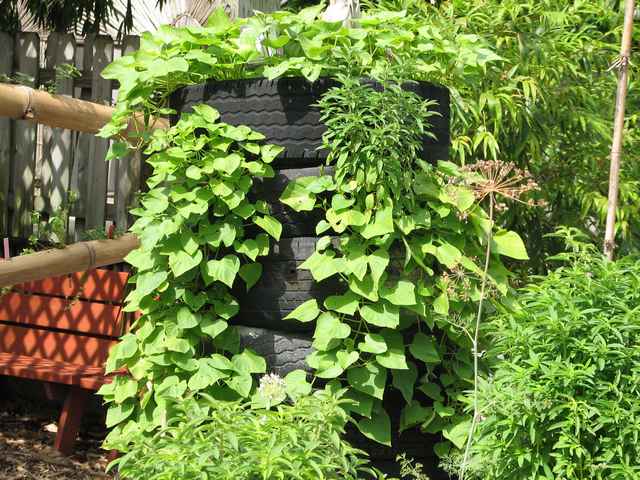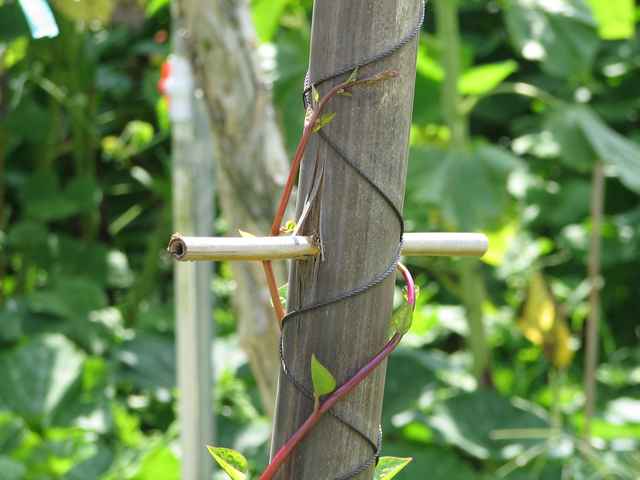We recently visited the ECHO Demonstration Farm in Fort Myers, Florida. ECHO (Educational Concerns for Hunger Organization) is a great resource for those wanting to learn how to grow food in difficult conditions. This trip was focused on a missionary project in Sierra Leone, West Africa. I am vice-president of Gather The Fragments Bible Mission Church, Inc. – my wife and I provide logistical support for missionaries working to spread the Gospel of Jesus Christ in a remote part of a very remote country – Sierra Leone. This trip to ECHO was with one of those missionaries so that she could learn more about how to improve the agriculture in that area.
ECHO publishes some excellent books. “Amaranth to Zai Holes – Ideas for Growing Food Under Difficult Conditions” is one of my favorites. While it covers problems that we in The South usually don’t face (iguanas, elephants, and monkeys are not typical garden pests here in The South), it is filled with great ideas that we can use here.

Guide describing the "urban garden" area. The farm is divided into different environments, and the urban garden area is build on a concrete slab.

The chickens coop in the back supplies manure, which is made into a tea, which is drip irrigated on the plants.

Wooden pallets used to build a platform that holds plastic bags of soil for plants to grow in.

Poles forming a pyramid for plants to climb on.

Extremely shallow planting. A plastic pool liner was used, along with a piece of old carpeting to grow crops in. Hay and other materials provide shade for the roots and reduce evaporation.

More shallow garden experiments. All of these are right on top of a concrete slab.

Plants growing in concrete blocks.

Sweet potatoes being grown in a stack of old tires filled with soil.

Tall poles (about 12' tall) were used to support climbing plants such as pole beans and cucumbers. The cord wrapped around gives the plants something to hold onto. The poles were supported with guy wires.

Biogas generator. This system uses manure to generate, capture, and store methane gas. The gas is stored in a truck inner tube. It is used to run a stove and lantern in this arrangement.

This is a dug well that has two pumps in it. The one being demonstrated here uses a hand crank that pulls pistons on a rope through a PVC pipe to pump the water.

This is a treadle powered pump that supplies the garden area to the left.

Huge sunflowers being grown here. These are the "Mammoth" variety.

Rice paddy demonstration. This is the traditional flood technique. Part of the reason this technique is used is to raise eels that are a delicacy in some parts of the world.

This is a newer, more efficient method of growing rice. The fields are not flooded, and other crops are planted between rice crops.

These ducks are part of a food producing ecosystem that includes micro-organisms that feed on the duck manure, and tilapia that feeds on organisms a bit higher on the food chain. The end result is meat from the fish, and eggs and meat from the ducks.

Plants being readied for their place at the ECHO farm.
I guess the people who do things from the ground up need to be congratulated. But, gosh, shouldn’t a garden be…attractive? If mine looked like the demo farm, I’d never go in there. Half of my efforts go toward making it a place I’m proud to bring visitors, not just a place of food production. Like the people in this project, I use a fair bit of “junk” I find lying around, though I stop at old tires (ugh). But there is a point of diminishing returns. It makes me wonder how a traditionalist from, say, Japan, would handle this project. The Japanese seem to have a “beauty gene”.
Why grow on a concrete slab, all hermetically sealed from the earth?
Of course, this is not MY garden, is it. If it works for the folks who made and maintain it, God bless them for their efforts. Do forgive me. I just had to say this, though.
I should have made it more clear exactly what ECHO is. It is a demonstration farm for missionaries to tropical areas – very third world stuff where they need to make do with lots of junk. We were there with a missionary to Sierra Leone, West Africa. She was there to learn about methods to improve the agriculture in that place.
The ECHO garden on the concrete is there to demonstrate to missionaries how to grow food in third world cities where the people have little or nothing but junk to work with.
I agree completely with the idea that a garden should be beautiful. No question about it. I haven’t figured just how to improve the looks of my raised bed garden. Any suggestions based on the photos shown here would certainly be welcome!
Thanks so much for the comment.
I find it very interesing. Its a look into a world that we don’t see. A day-by-day survivalist enviroment. I also like the website. There’s lots of good tips and resources on there. One truth can be said about this project, where God guides He will provide.
I would like further information about your treadle powered pump .. materials, and instructions to build. I found out about you folks from a blog I subscribe to and there the author’s comments section gave your link from one of the blog followers.
… Wonderful ideas – keep up the good work.
Doug,
You would need to check directly with ECHO for any details (there is a link at the top of this page). If you search their web site, you may find exactly what you’re looking for. They publish the results of their research, and if it’s not found on their web site, they have an excellent book store where you can purchase a wide variety of materials. We came back with several excellent books for reference.
I took the photos on a visit there. It is a very impressive operation, and I would highly recommend that you take their tour if you ever have the opportunity. We went with a missionary to Sierra Leone, West Africa, and that is where ECHO focuses their work. We were able to spend some extra time there talking with folks and browsing through their library (normally limited to students and those directly involved in some way). ECHO holds classes at various times, and that may be something you’d be interested it.
Thanks for stopping by!
Hi .. thanks for the prompt reply. I will access their site.
And to you and your work – thanks = I believe I am now subscribed so I am looking forward to all you have to share. Keep up the good work … and thanks again … doug
echo farm is a wonderful , neat, tidy, lovely and helpful learning experience for those who have never farmed or gardened before, or who are at different levels of knowledge of growing, whether for survival, for wise use of land types, as well as finding new innovative ways to grow better, smarter, and more efficiently. we have learned so much on our two trips to echo farm! now, with the threat of gmo tainted crops all the more reason to prepared for what the future holds.
on a side note….we bought a sweet potato plant from echo, set it out in the ground near the edge of our seashell driveway and our plumbago plants, our purple petunias, our glory bush and under the moringa trees.. all in the front yard….actually our front yard is very efficient as we have made a formerly useless typical grassy front yard into a seashell driveway that fits 4-5 vehicles, and the side areas are for planting, with a wrap around wood deck for showing off a 24 ‘ expanse of beautiful full purple petunias that bloom all year round between the house and the deck! the sweet potato has been a lovely ground cover…that was given very little attention until the middle of december when we were surprised to find that it had produced a good basketful of all size sweet potatoes, that we washed, set in on the counter to dry, and promptly baked one to find that the taste was great. we see the value of plants and flowers that are edible rather than just ornamental. thank you echo farm, keep up the very good work! we have a new criteria: it must be pretty, non prickly, non poisonous, useful, and productive to stay in our little 50x 150’ lot. hope this helps someone else to rethink what constitutes “beauty”…..
thank you again echo farm for your food production techniques and your care for the souls of the people of the world as well!
john from southwest florida
Thanks for stopping by, John.
We’ve got a really nice crop of sweet potatoes this year. I’ve found that the type of soil they are planted in makes a big difference. Last year, we planted them in some very loose soil (a growing mixture, actually) in our raised bed garden. It was so loose that rather than forming “potatoes”, it just formed lots of very long roots – nothing usable. This year, it was planted in the ground with much denser soil and they did great.
I am so impressed with the demonstrations I have seen here especially the sweet potatoes planted in an old tyre. I have several old tyres of tractors lorries and I have realized that I have bee underusing them. Thanks for this knowledge I have got today
The ECHO Demonstration Farm is a great resource for new ideas. The missionary that we went there with will be returning the the U.S. this summer to attend a class there. I’m sure she will have some more great ideas to share, and I’m looking forward to adding them here.
Thanks for writing!